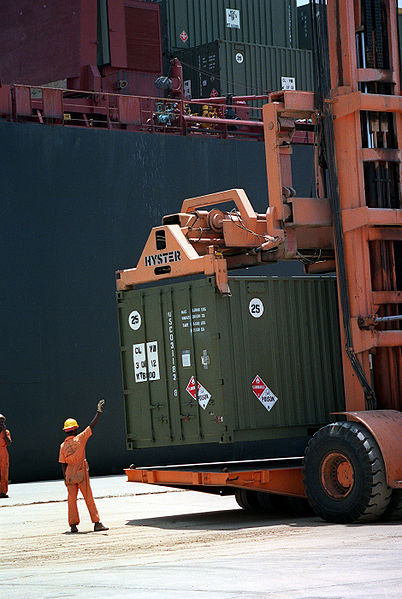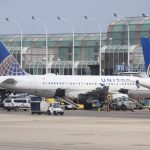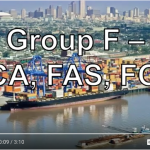ILWU Negotiations Help NY/NJ Surpass LA/LB as Busiest U.S. Port
It’s become something of a habit when talking about the sister ports of Los Angeles and Long Beach to mention they’re the busiest port complex in the U.S. in terms of cargo volume brought in through them. I don’t go looking up the stat when I routinely write approximately 40% of U.S. imports come through the Ports of Los Angeles and Long Beach. However, something has changed that should make us writers who cover the international shipping sector think twice before calling the San Pedro Bay port complex the busiest in the country.
A New King of the Ports
The Port of New York and New Jersey has recently taken the crown as the busiest port by imported container volume.
Michael Angell reports in the Journal of Commerce:
The Port of New York and New Jersey became the busiest US port by container import volumes in late 2022 thanks to new services and cargo diversions stemming from congestion and longshore labor negotiations on the West Coast.

ILWU Hands Market Share to East and Gulf Coast Ports
Shippers have been diverting cargo from West Coast ports for the better part of a year because they know labor slowdowns have become a standard part of International Longshore & Warehouse Union (ILWU) contract negotiations. 2002 and 2014-15 were extremely costly examples of this both for shippers and the U.S. economy in general.
The last ILWU master contract expired July 1st of last year. Here we are six-and-a-half months later, and the ILWU looks no closer to reaching a new contract than the day the previous one expired.
Of course, there have been labor disruptions at West Coast ports during this negotiation period, but shippers’ diversion of cargo from West Coast ports to East and Gulf Coast ports, something they began doing in the months leading up to the expiration of the ILWU master contract, helped mitigate the labor disruptions.
Shippers moving discretionary cargo away from the West Coast gave East and Gulf Coast ports significant market share increases. Bill Mongelluzzo reports numbers in another JOC article:
The West Coast’s share of imports coming from Asia dropped to 58.8 percent in 2022, down from 61 percent in 2021, according to PIERS, a Journal of Commerce sister product within S&P Global. The East Coast share rose to 34.2 percent, up from 32.9 percent, while the Gulf Coast share rose to 6.7 percent from 5.8 percent.
The shift in market share continued as US imports from Asia fell overall, with cargo moving through the West Coast plummeting more than 20 percent in November from the year-earlier period. The East and Gulf coasts saw lesser declines.

Cargo Not Shifting Back Soon
There’s no reason to think this market share will go back to West Coast ports anytime soon. That’s because there’s no reason to think the ILWU contract negotiations will come to resolution anytime soon.
By all accounts, the ILWU is slow-playing negotiations until a ruling is made on a union jurisdiction dispute at the Port of Seattle’s Terminal 5. According to Mongelluzzo, that ruling is expected to be a month or two away.
Luckily, congestion at the ports has been largely cleared away. Unfortunately, that is because of economic downturn with demand returning to pre-pandemic levels. At least for shippers, that’s good news in terms of falling freight rates and cargo flowing through the ports much more smoothly. It also means already existent congestion isn’t there to amplify labor action that disrupts operations at the ports.
My expectation is that things between the ILWU and their Pacific Maritime Association (PMA) employers will remain rather quiet until the jurisdiction ruling comes in. After that is when contention is likely to ramp up as the parties have to work through difficult issues, with automation likely to make things ugly. My worry is if the ILWU loses its jurisdiction battle with the International Association of Machinists and Aerospace Workers (IAMAW), tensions could escalate quickly.
There’s no reason to think shippers will bring discretionary cargo back to the West Coast until after a new contract is reached between the ILWU and PMA. That contract appears to be months away. I wouldn’t be surprised in the least to see us heading into this year’s peak season with no contract in place.
Market Share Could Remain Away from West Coast Even After ILWU Resolution
It is expected once a contract is finally reached, cargo will return to the West Coast and the Ports of Los Angeles and Long Beach will retake their place as the busiest port complex in the country in terms of imported cargo volume. However, some of the market share East and Gulf Coast ports have gained will likely not return. Not only are shippers tired of the cycle of contentious contract negotiations on the West Coast costing them money, but East and Gulf Coast ports are investing in services and capability to keep more cargo volume with them.
Angell shared a number of things the Port of NY/NJ is doing to support more cargo moving through it:
Maher Terminals has added three new super-post-Panamax cranes to an existing berth that are expected to be in service some time in 2023, while GCT Bayonne will add a new berth and cranes for super-post-Panamax ships by 2025 and Port Newark Container Terminal is studying adjacent land to add capacity. The first bids for a $100 million project to improve a three-mile truck corridor through the port are also expected to be submitted by next year, and PANYNJ is moving forward with a study on additional rail track extending from the port that will reduce delays for intermodal service, but there is no timeline at present for when those projects will be completed.
Meanwhile, reasons for businesses to continue to move away from China with their sourcing could support the Port of NY/NJ and others on the East and Gulf Coasts in their bids to hold more market share that has traditionally belonged on the West Coast and at the Ports of Los Angeles and Long Beach in particular.
Certainly, the Port of NY/NJ doesn’t just want to be king for a day.





